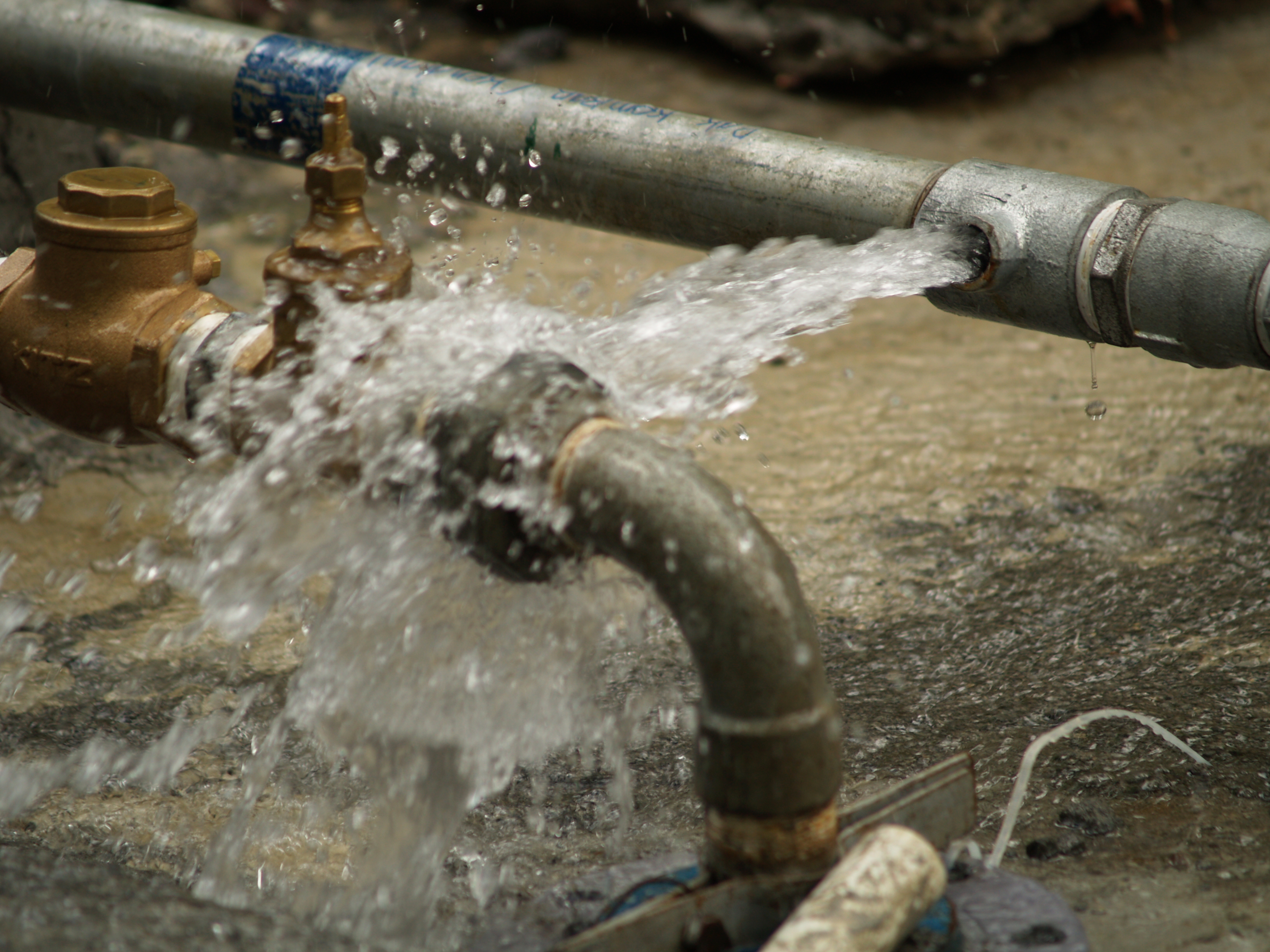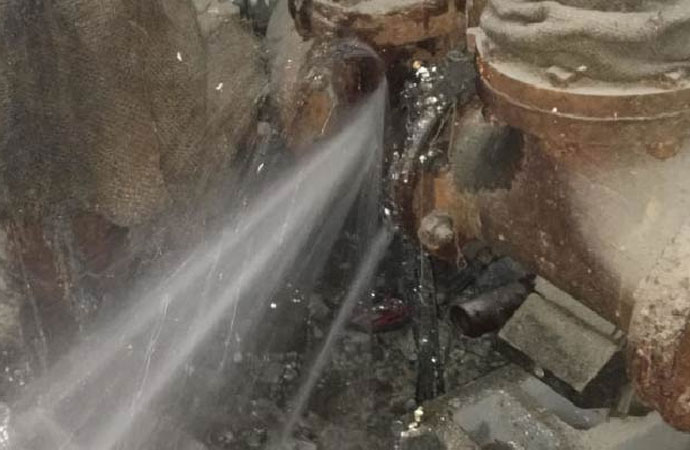From Detection to Correction: A Fast Approach to Handling Burst Pipes
From Detection to Correction: A Fast Approach to Handling Burst Pipes
Blog Article
Just how do you really feel in regards to What to Know Before Installing a Dishwasher?

A ruptured pipeline is a major emergency; you can just stand as you see water you pay dearly to rejoin with the earth. In worse instances, you notice a pool on your kitchen area flooring, which is a fantastic trip danger, especially if you have children around. If the pipeline that ruptured was in your walls, problem: you might require to repaint that entire area.
Just how can a calamity like a burst pipeline be protected against and managed? Well, by paying attention to your specialist emergency plumbers and following these policies.
Just how do I recognize when my pipelines have burst?
Varying water pressures
Pipelines do not simply burst in a day. You might have observed that your cooking area faucet or shower does not run immediately when you turn the faucet. It may stop briefly for a couple of secs and afterwards blast you with even more force than usual.
In other instances, the water may seem typical initially, after that decrease in stress after a couple of secs.
Infected water
Many individuals assume a burst pipe is a one-way outlet. Quite the contrary. As water flows out of the hole or gouge in your plumbing system, contaminants find their way in.
Your water may be contaminated from the source, so if you can, check if your water tank has any problems. However, if your drinking water is supplied and detoxified by the local government, you need to call your plumber quickly if you see or scent anything amusing in your water.
Puddles under pipelines as well as sinks
When a pipeline bursts, the outflow creates a pool. It may appear that the pool is expanding in dimension, as well as regardless of the number of times you mop the puddle, in a few mins, there's an additional one waiting to be cleansed. Commonly, you may not be able to trace the pool to any kind of noticeable pipes. This is a sign to call a professional plumber.
Damp wall surfaces as well as water spots
Before a pipe ruptureds, it will certainly leak, many times. If this persistent dripping goes undetected, the leak may finish right into a broad gouge in your pipe. One very easy method to avoid this emergency is to look out for damp wall surfaces advertisement water spots. These water stains will lead you right to the leakage.
Untraceable leaking noises
Pipeline ruptureds can occur in the most undesirable locations, like within concrete, inside walls, or under sinks. When your house goes quiet, you may have the ability to listen to an irritatingly persistent trickling noise. Also after you have actually checked your shower head and also kitchen area tap, the trickling may proceed.
Dear viewers, the leaking may be originating from a pipe inside your wall surfaces. There isn't much you can do regarding that, except inform a professional plumber.
Show up the Warm
Set up followers to blow heat right into cold areas. Keep the garage door closed. If you have actually reduced water circulation, heat one of the most susceptible pipelines (normally in basements as well as crawl spaces or near exterior wall surfaces) with a hair dryer. Leave the tap on while you apply warm. As you melt ice, the circulation will boost. To prevent pipelines from freezing, protect your walls.
Beginning Eliminating the Water
Order the mop, pails and a store vacuum to begin to eliminate the water due to the fact that you certainly do not desire it soaking right into everything else in your home. Plus, a quick tidy up will minimize the chances of something getting musty.
What do I do when I spot a ruptured pipeline?
Your water meter will remain to run also while your water wastes. To reduce your losses, locate the main controls and transform the supply off. The water pipe are an above-ground structure at the edge of your property.
How to Fix & Detect a Leaking Pipe
How Do I Know if a Pipe is Leaking?
Leak detection tests can help you determine if your pipe has a leak. Even if you don’t see an apparent leak, you should still conduct leak detection tests regularly to save water and money—and prevent major damage to your home.
Water meter. It can be helpful to figure out what your usual water meter usage numbers are and then monitor them regularly. To monitor your meter, first, turn off all water faucets in your home. Check the meter and write down the numbers. In a few hours, check the meter again. If the numbers have changed, you have a leak. Water gauge. Use a water gauge to test your water pressure. Your showerhead should produce a certain amount of water pressure based on its model and design. If the pressure is lower than it is supposed to be for that specific showerhead, your home likely has a leak. Puddles. Look inside your bathroom, laundry, and kitchen sink cabinets. Puddles around the cabinets or around toilets, tubs, showers, and washing machines indicate the presence of a leaking pipe. You may also notice loose tiles, peeling or flaking paint, or mold caused by water accumulation. Napkin test. Even if you don’t see any puddles, you may still have a leak. You can test for water leaks in the bathroom, laundry, and kitchen by wiping below-sink connections with a napkin, paper towel, or piece of toilet paper. If it becomes damp, you probably have a leaking pipe under the sink. Discolored walls. Walls that are discolored—usually with brown or yellow stains—or bulging might mean that they have been impacted by water damage caused by a leaking pipe. Smell. A leaky pipe will create sitting water, and over time, that water may develop a musty smell. If your home smells musty, but you can’t locate the source, it may be due to a leak. Steps for Fixing a Leaking Pipe
A leaky drain can be remedied by tightening the pipe base, replacing the drain seal, caulking the rim, and tightening the pipe nut. Similarly, a leaking toilet pipe can be treated by tightening the packing nut. You may also need to replace the valve. A leaky faucet may just need tightening or replacement of the washers. If that doesn’t work, consider replacing your faucet. If your pipe has a hole in it, you may want to use a pipe leak sealer or pipe leak tape. This quick fix for water pipe leaks can also temporarily fix a copper pipe leak. https://www.ahs.com/home-matters/quick-tips/how-to-tell-if-pipes-are-leaking/

We hope you liked our section on How to Prepare for Your Dishwasher Installation. Thanks for spending some time to read through our article post. Enjoyed reading our entry? Please share it. Help another person discover it. I love reading our article about How to Install and Connect a New Dishwasher.
Visit Site
Report this page